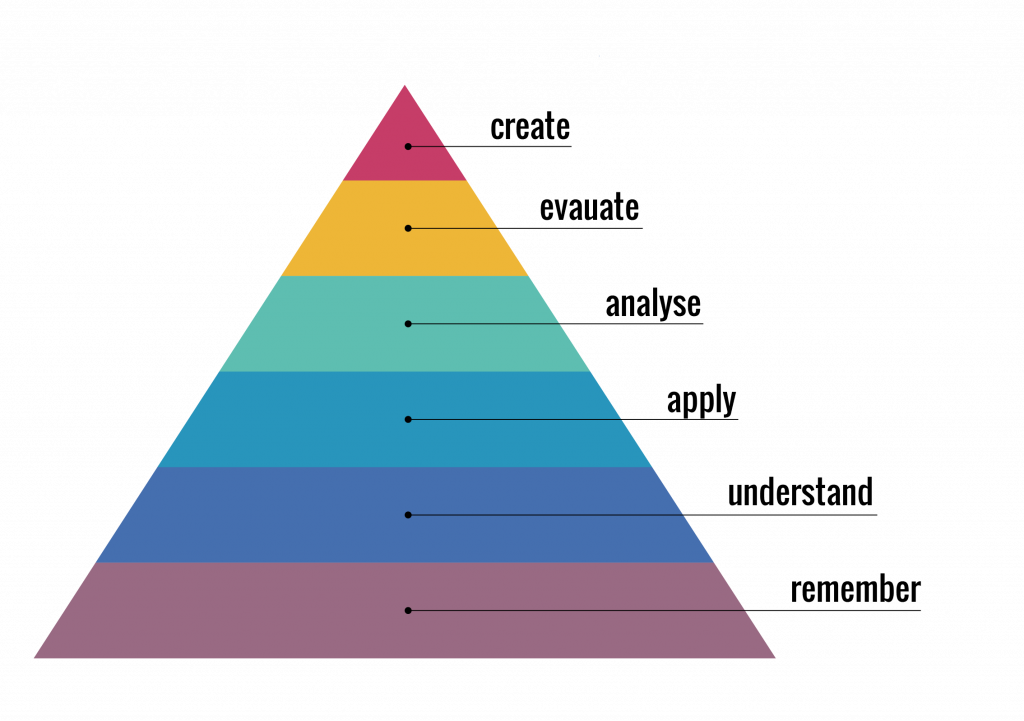
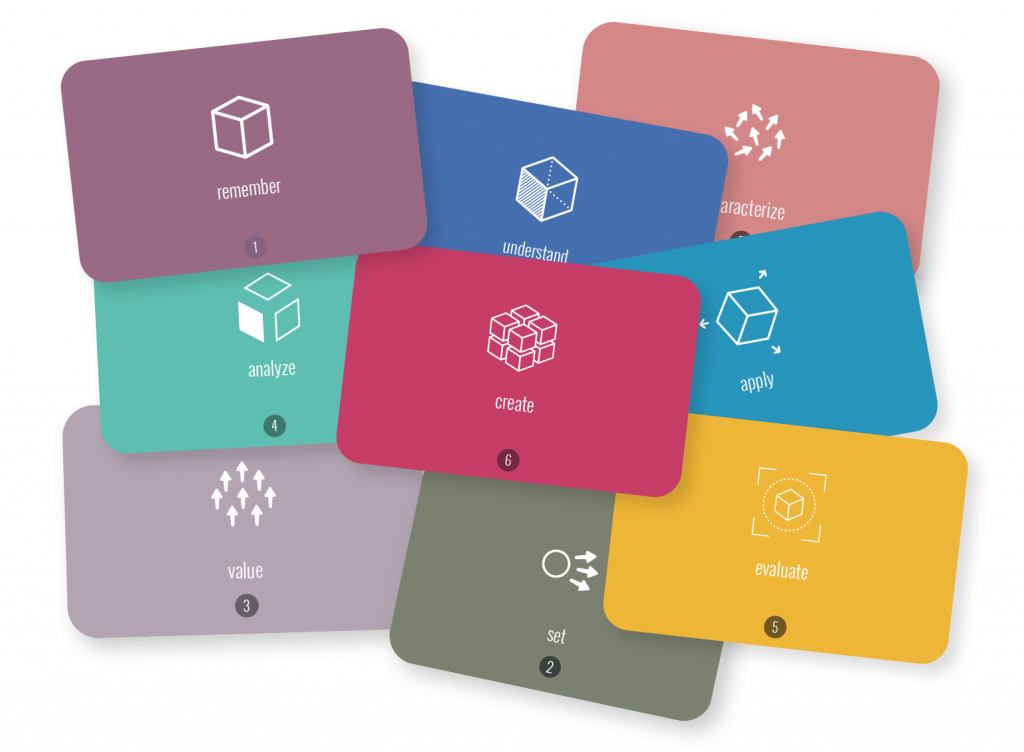
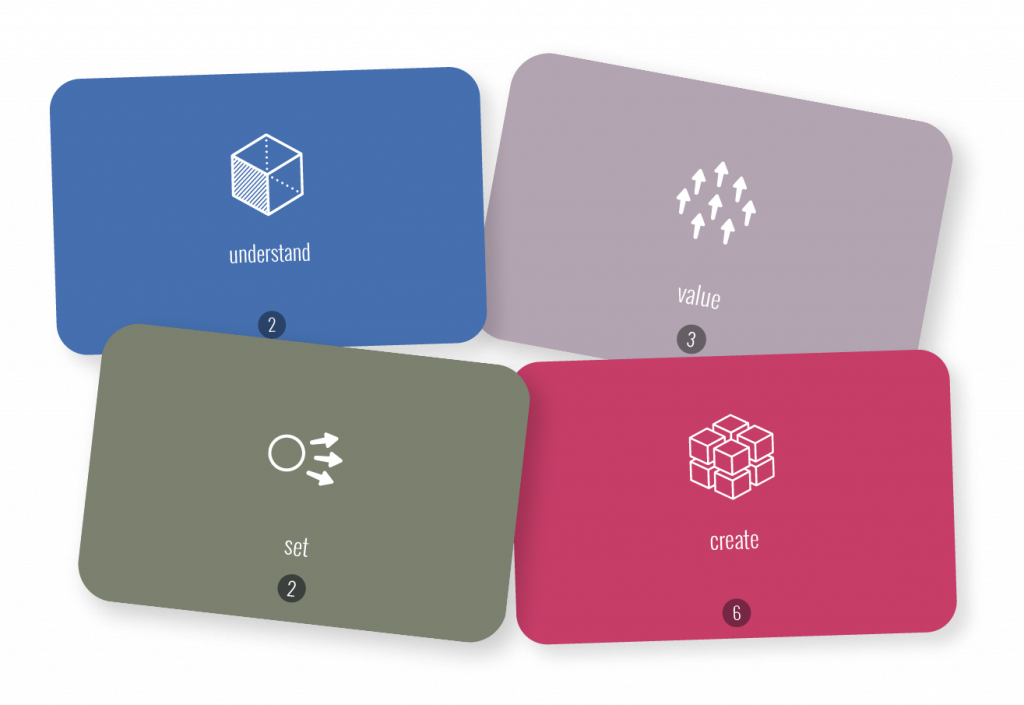
About the
Learning
Design
Tools
Helping educators to design
engaging learning experiences.
about the Learning Design Tools
The Learning Design Tools provide a comprehensive toolkit to support curriculum design. With a set of tools and canvases aimed at educators tasked with creating learning interventions, they provides structure and coherence to the collaborative process of crafting engaging learning experiences.
The process of designing learning objectives, commonly created through adaptation of the established Boom’s Taxonomy, is a practice in academia and education surrounding topics such as Curriculum & Instruction and Learning Assessment.
Defining learning outcomes before any educational experience is an established best practice. Bloom’s taxonomy is a powerful framework that can be used to construct, articulate and write the learning objectives of a program, a course or a learning unit.
The Learning Design Tools augment the traditional practice of learning objective creation with a narrative approach to foster the formulation of actionable sentences that constitute the learning outcome for any educational activity.
Card-Based Curriculum Design
As the process of defining learning objectives is an often tedious and complex endeavour, the Learning Design Tools build on a card-based design approach to learning objective composition with its Learning Objective Design Deck.
Cards provide a tangible interface, accessible to anyone, and allow an easy overview of an otherwise complex subject. They help to spark creativity, foster discussion or to align ideas and to develop common language in a collaborative interactions. Also, they are adaptable to individual needs.
For blended or virtual environment, the narratively driven approach of the Learning Design Tool has been implement with the Learning Objective Design Board, that can be used for interactive workshops or design sprints with interactive whiteboard solutions, such as Miro. Using different learning objective design canvases, learning outcomes can be designed, shared and discussed in remote and asynchronous collaboration.
Learning Design as a Process
For a deeper understanding of the process and the theory behind learning objective design, the Learning Objective Design Handbook may serve as a reference and source of actionable examples that can easily be adapted to any educational or organisational learning context.
For more in-depth support in learning objective design, the Learning Design Workshop serves to present and train the process to design comprehensive sets of learning objectives and constructively aligned assessment strategies.
Get the cards
Get the Cards
Theory Behind Learning Design Tools
The Learning Design Tools provide tools and canvases to support the process of creating engaging and transformative learning experiences for any educational context. The toolkit builds on the process of defining learning objectives and assessment strategies for any type of educational experience, based on long and well established research in pedagogy and education sciences.
This is a brief overview of the theory behind the Learning Design Tools, why and when it may be useful to use them as well as some tips on how to get the most out of the toolkit.
Learning Theory
The Taxonomy of Educational Objectives, published in 1956 by Benjamin Bloom and collaborators, widely known as Bloom’s Taxonomy, is a framework to categorize and describe educational goals. The Taxonomy has been used by generations of teachers and instructors in their practice to better define the learning objectives of their educational interventions.
More recently, in 2001, the original Bloom’s Taxonomy was reviewed by a group of psychologists, instructional and curriculum researchers that published A Taxonomy for Teaching, Learning, and Assessment, also familiarly know as the Revised Bloom’s Taxonomy.
The revised taxonomy substituted the nouns of the original taxonomy with more dynamic verbs and gerunds to emphasize the dynamic nature of learning. These verbs address the different dimensions in the cognitive domain, the different types of thinking processes learners encounter and practice while acquiring new knowledge and skills. As such, the revised version of Bloom’s taxonomy provides an action oriented approach to learning objective design.
For an even deeper consideration of underlying principles developed as part of Bloom’s taxonomy, the affective and psychomotor domains of the taxonomy can be leveraged. They allow learning experiences to be modeled while also considering motor skills, such as physical movements, reflexes and coordination, and emotions, motivation and attitudes as well as social skills. In conduction, the cognitive, affective and psychomotor domains address the categories of thinking, feeling and doing.
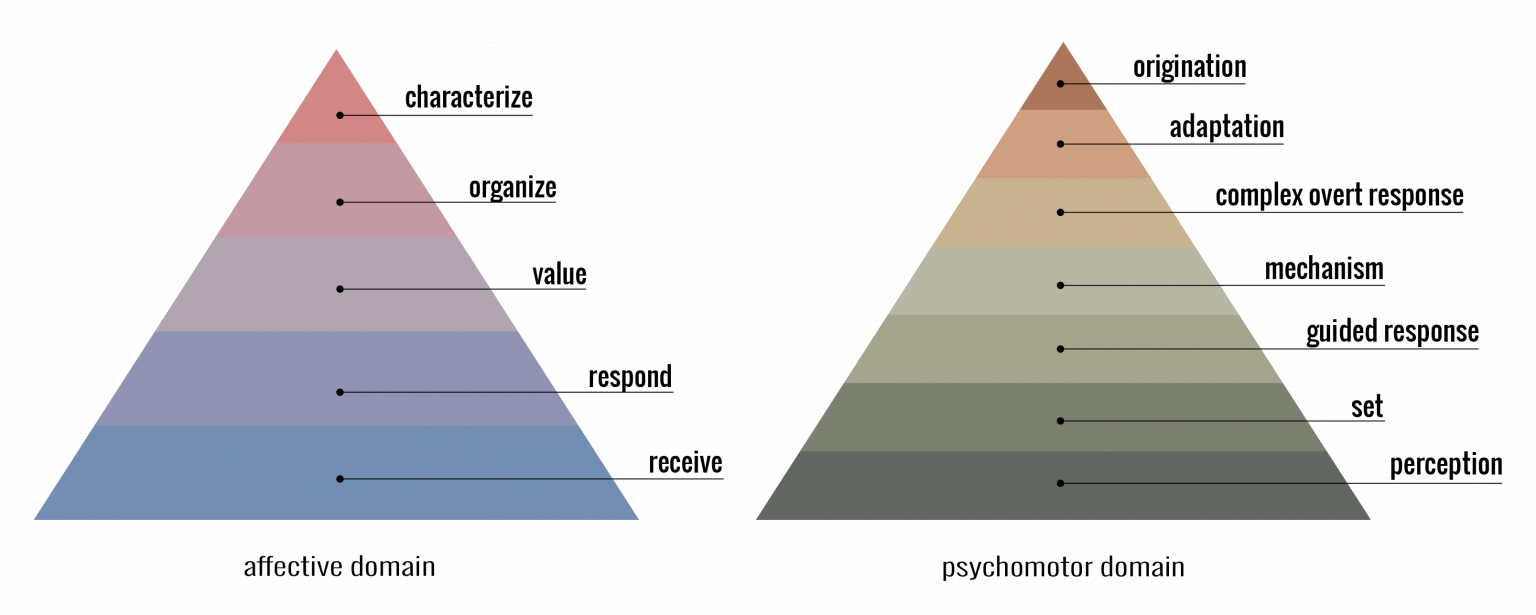
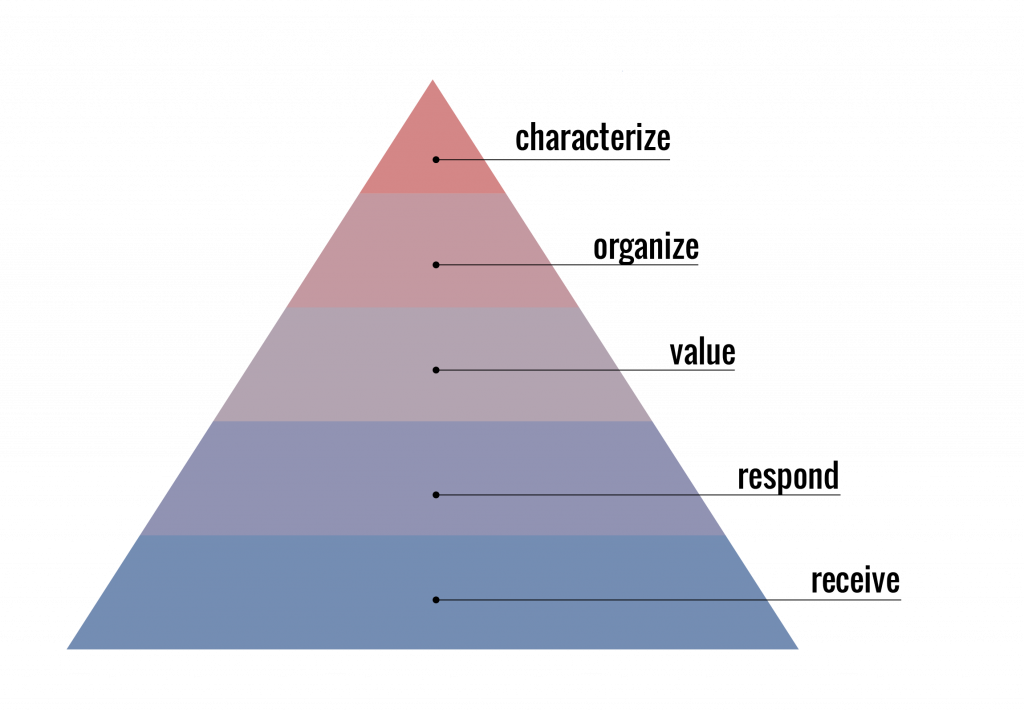
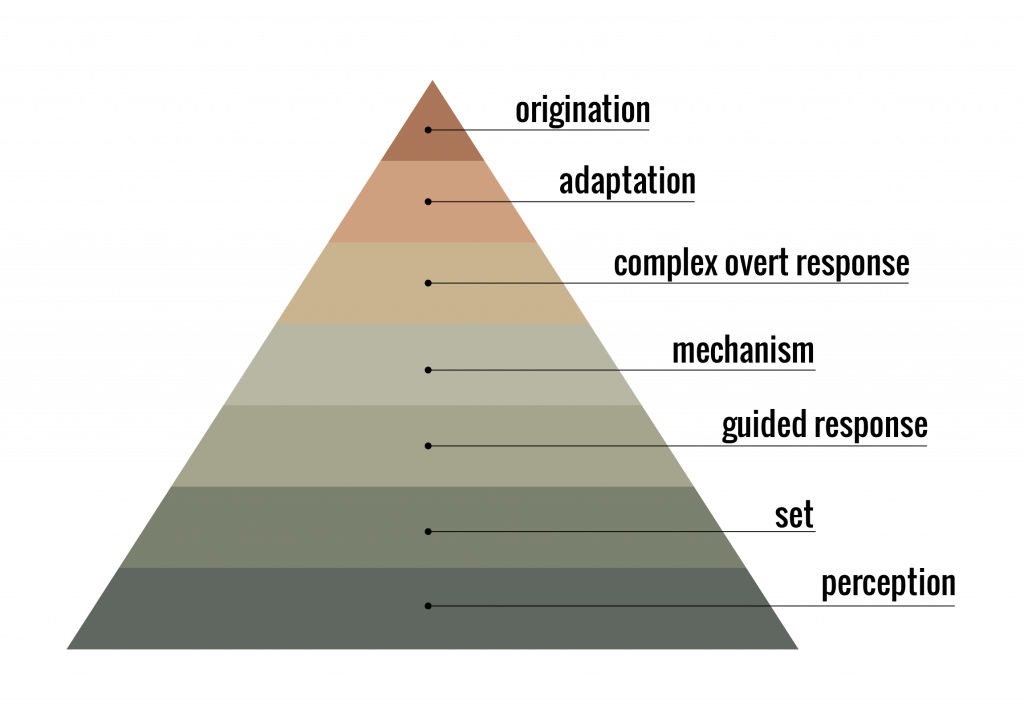
This approach is especially suited to active learning and problem-based approaches and other contemporary ways to structure learning experiences. Moreover the revised version, with its action-verbs and process oriented approach, allows educators to frame and define learning objectives with a learner-centred approach right from the initial steps of the learning design process.
Learning Design
Most relevant in this context are design tools and methods that attempt to merge established pedagogical principles and patterns with design-oriented practices, such as user-experience design, service design or interaction design, to foster the learning design on levels of curriculum and course design as well as more granular levels of single learning activities.
A key component of learning design as a practice is the more explicit and sharable approach to the design process. Beyond its empirical perspective, it accentuates the creation of sharable resources, tools and activities. As such, learning design can be seen as a discursive practice- as in language in action – that results in the production of knowledge.
Narrative Theory
Design tools and artefacts involved in the process of learning design can be expressed in formal or natural language in form of narratives, as well as in visual forms. Building on this notion, the Learning Design Tools incorporate ways to provide the learning design process with structural coherence.
The element of language seems most relevant to this effect, which prompted to employ narrative theory in the approach towards learning objective design. If learning objectives are written with learners as the subject of the statement, or as protagonists of a short “learner-story” that may very well serve as language in action.
This approach on its own can be a storyboarding mechanism, as narrative statements are constructed and actionable sentences can be created with predefined sets of grammatically coherent elements that address cognitive dimensions and knowledge dimensions established in the taxonomy.
Participatory Design
The Learning Design Tools are building on the increasingly recognized potential of participatory design and co-design practices in education and learning design and accentuates how the design process benefits from interactions between participants.
Especially the participatory dimensions of telling through use of storyboards, cards and sticky-notes is at the core of the Learning Design Tools.
A number of strategies and practical methods for learning and instructional design that leverage the collaborative and creative capabilities of card decks have been recently developed and established in both academia and practice.
In particular, a number of practical, fast-paced workshops – pretty much in the style of design sprint and design thinking workshop – that attempt to merge established pedagogical principles and patterns with design-oriented practices with the goal of designing curriculum, courses or activities, have been serving as an inspiration for the Learning Design Tools.
Card-Based Design
Cards are effective artifacts to be used within design practice and foster combinatorial creativity, serve as tangible containers for ideas and enable collaboration. The Learning Design Tools can therefore be used as a conversation starter and its process of using truncated statements and components representing the Bloom’s Taxonomy support structuring design interventions. The card decks helps making ideas and arguments tangible and moderates shared understanding and common language.
The approach is particularly suited for collaborative workshops, with its ability to foster collaborative learning design on levels of curriculum and course design as well as more granular levels of single learning activities.
Learn how to create effective learning outcomes in a collaborative workshop with your team or faculty.
Want to know more?
The theoretical work being the Learning Design Tools is an integral part of academic research in the field of learning design. The approach of applying theories of participatory design and card-based design practices with narrative theory and learning design principles led to a series of publications that provide insights in the genesis of the tools and canvases provided as part of the Learning Design Tools.
Academic Publications
Perna, S. & Recke M.P. (2021) “Card-Based Learning Objective Design”, In Proceedings of LEARNxDESIGN 2021: 6th International Conference for Design Education Researchers, September 24-46 2021, Shandong University of Art & Design, Jinan, China. DOI: 0.21606/drs_lxd2021.11.145w. More information
Recke, M.P. & Perna, S. (2021) “A Card-Based Learning Objective Design Method for Collaborative Curriculum Design”, In Proceedings of the 7th International Conference on e-Society, e-Learning and e-Technologies ICSLT 2021, June 18-20, 2021, Portsmouth, United Kingdom. DOI: 10.1145/3477282.3477286. More Information
More academic publications can be found on the ResearchGate profiles of Moritz Philip Recke and Stefano Perna.
Conferences
Perna, S. & Recke M.P. (2021) “Card-Based Learning Objective Design”, Presented at LEARNxDESIGN 2021: 6th International Conference for Design Education Researchers, September 24-46 2021, Shandong University of Art & Design, Jinan, China. More information
Recke, M.P. & Perna S. (2021) “Collaborative Card-Based Learning Objective Design”, presented at 20th European Conference on e-Learning ECEL 2021, October 28-29, 2021, Berlin, Germany. More Information
Recke, M.P. & Perna S. (2021) “Collaborative Learning Objective Design for Blended Environments”, presented at 8th European Conference on Social Media ECSM 2021, June 30, 2021, UCLan Cyprus, Larnaca, Cyprus. More Information
Recke, M.P. & Perna S. (2021) “Collaborative Card-Based Learning Objective Design”, presented at REMOTE Summit 2021, June 10, 2021, Arizona State University, Arizona, United States. More information
The video of the presentation at the REMOTE Summit 2021 is available on demand until the end of 2021 at theremotesummit.org and on the Teach Online Platform of Arizona State University.
Video
Podcast
Learning Experience Leader by Greg Williams: “Learning Objectives as Value Exchange with Moritz Philip Recke and Stefano Perna” on August 10, 2021. Available on Apple Podcast, Spotify, Google Podcast, Amazon Music, etc.
Get the cards
Get the Cards

Learning Objective Design Deck
Choose between a free downloadable version of the card deck that you can print and cut to get started or a real card deck that will last. Pick what works for you.

Learning Objective Design Deck by Imaginary Institute is licensed under CC BY 4.0
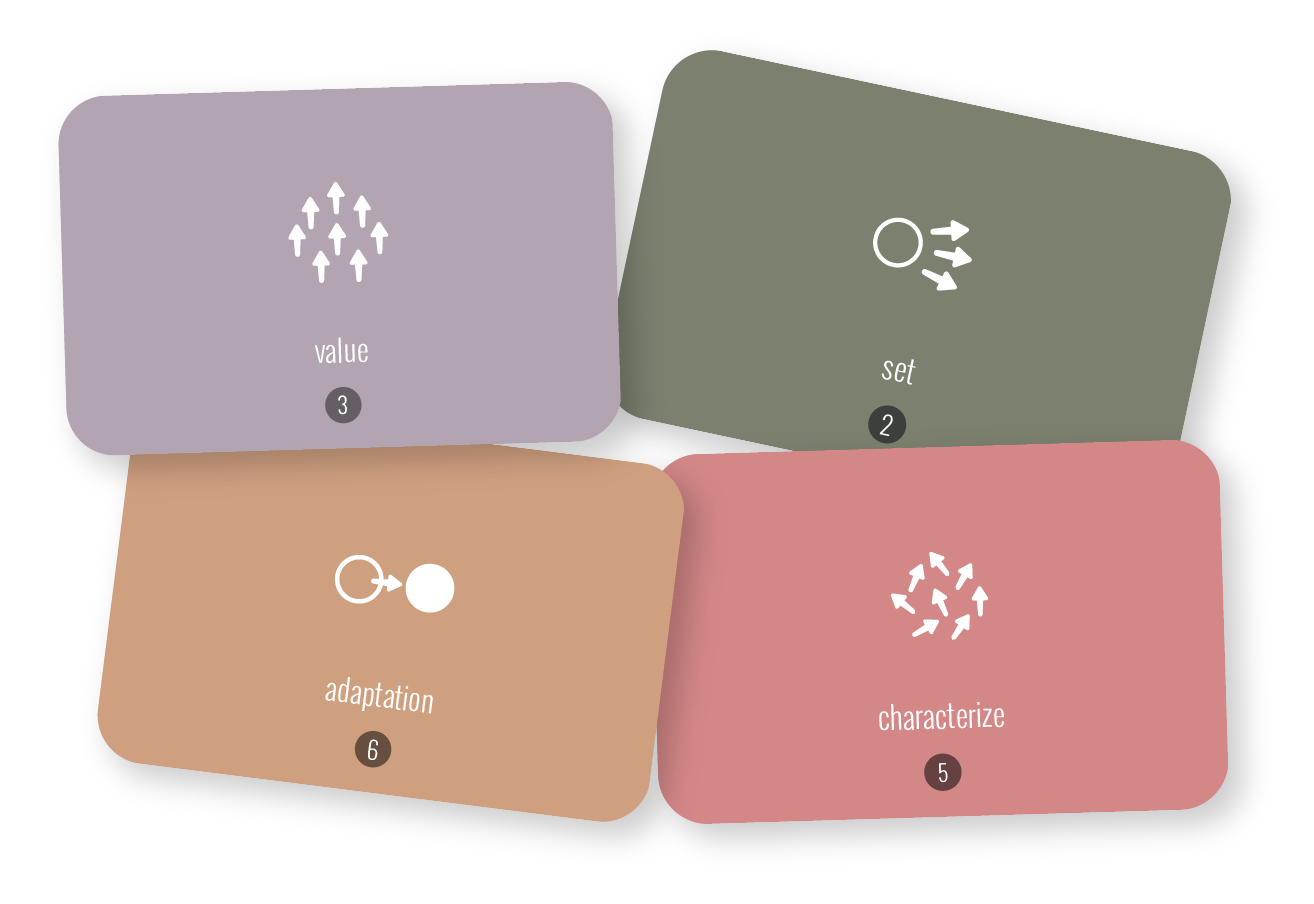
Learning Objective Design DeckExpansion Pack
Choose between a free downloadable version of the card deck that you can print and cut to get started or a real card deck that will last. Pick what works for you.

Learning Objective Design Deck Expansion Pack by Imaginary Institute is licensed under CC BY 4.0
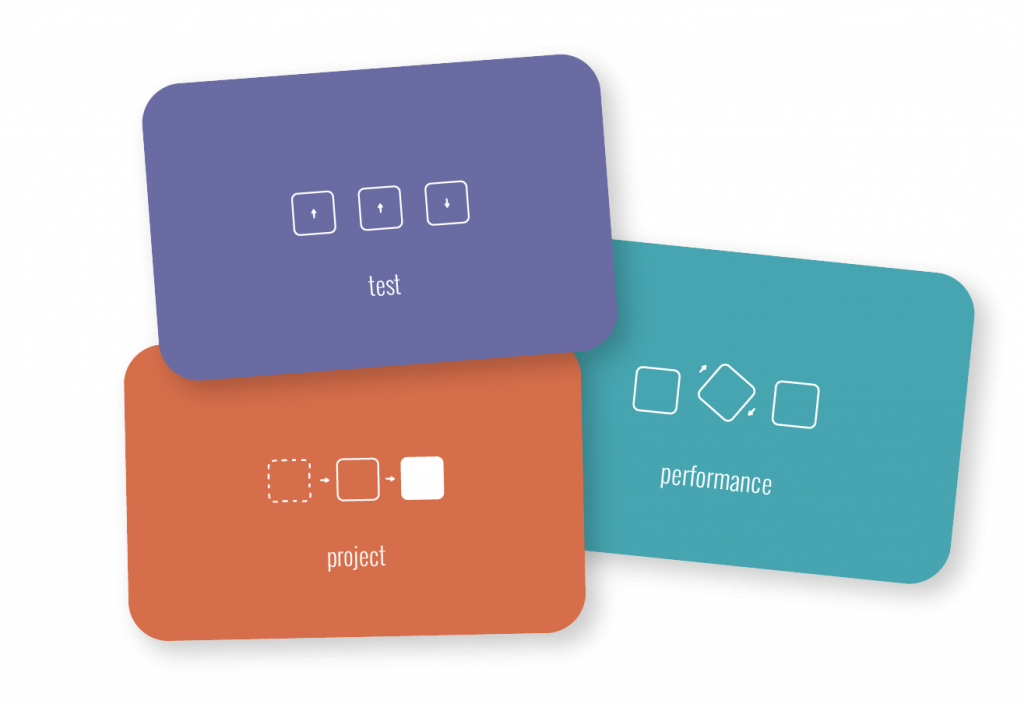
Learning Assessment Design Deck
Choose between a free downloadable version of the card deck that you can print and cut to get started or a real card deck that will last. Pick what works for you.

Learning Assessment Design Deck by Imaginary Institute is licensed under CC BY 4.0
